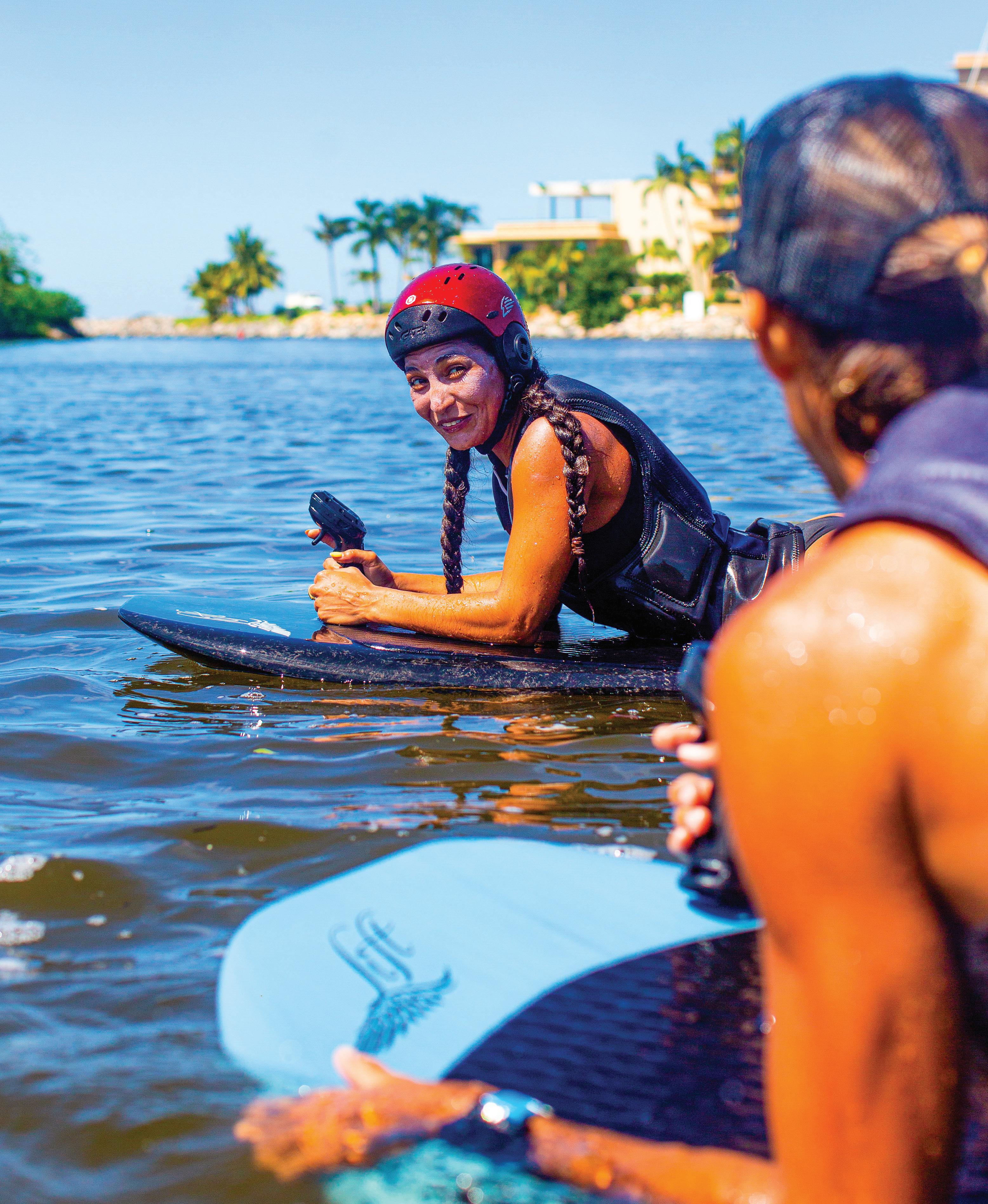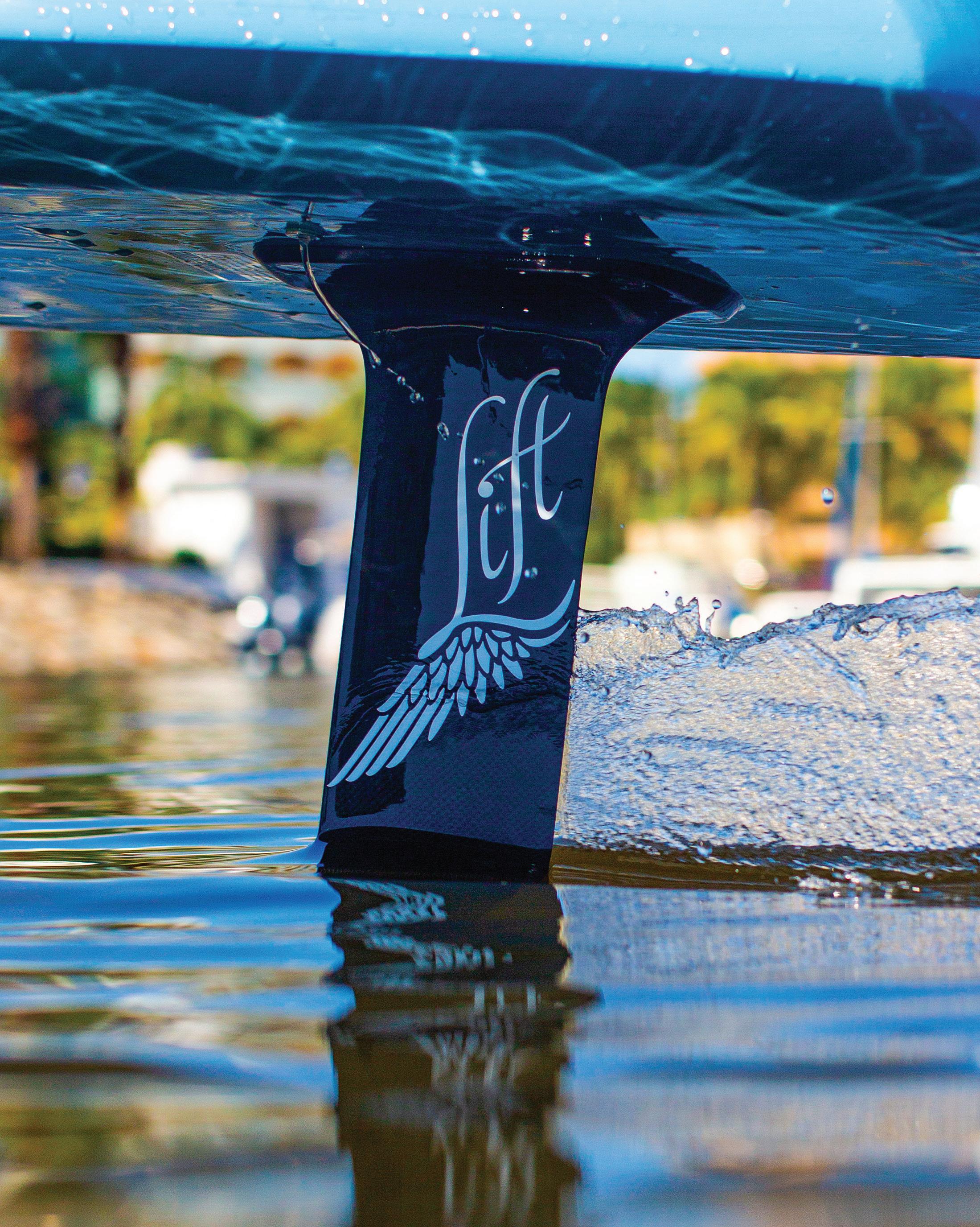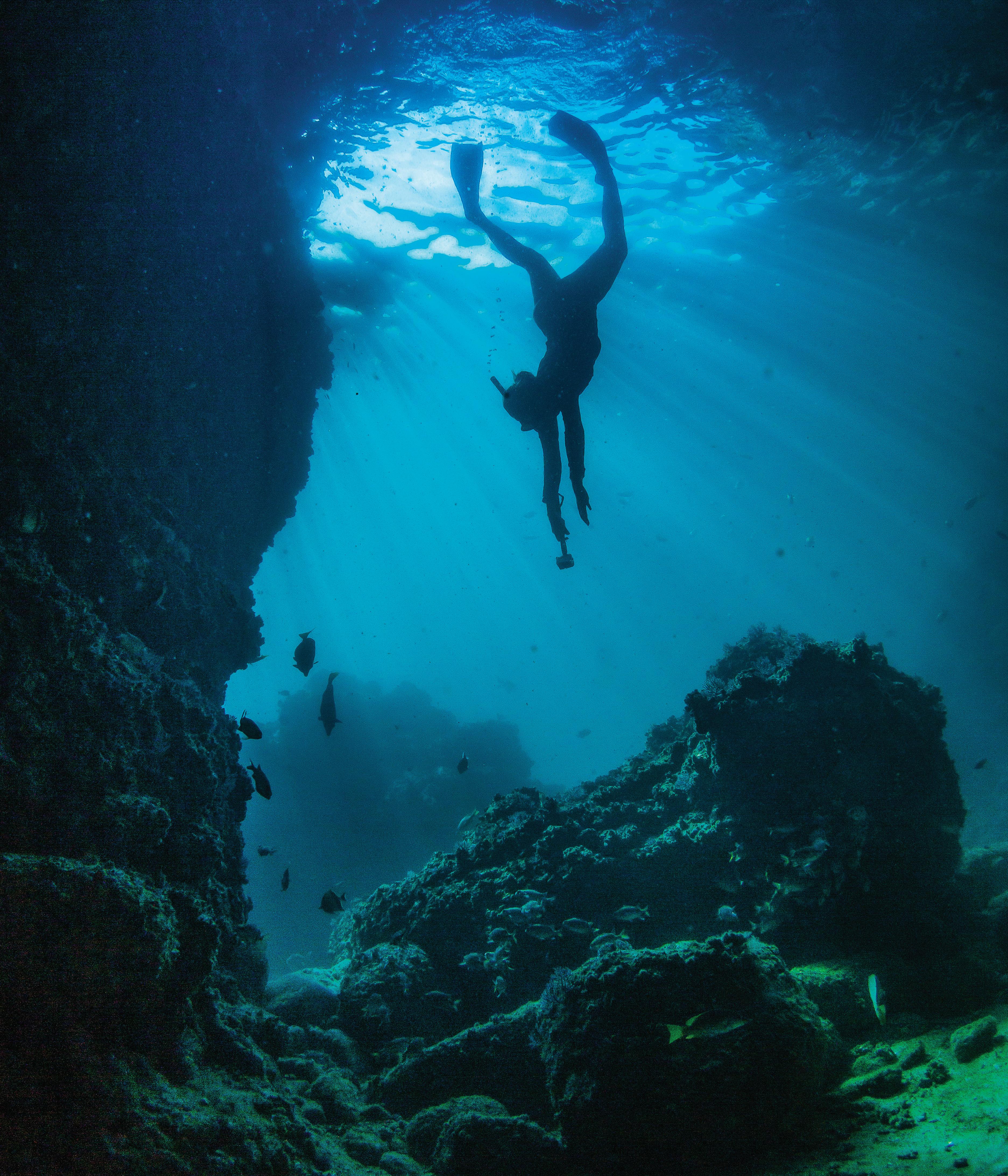
3 minute read
eFoil
In addition to his enthusiasm for watersports, a passion that has led him to participate in numerous national and international events and tournaments, Sebastián Tron has years of experience in the conservation and aquatic rescue of marine fauna in and around Banderas Bay. Además de su entusiasmo por los deportes acuáticos, pasión que lo ha llevado a participar en diferentes eventos y torneos de nivel nacional e internacional, Sebastián Tron cuenta con experiencia en la conservación y rescate acuático de fauna marina en y alrededor de la Bahía de Banderas.

goals-objetivos
“For us it is very important that before the end of the first session the student is able to stand on the board, learn to fly, and then begin to move faster.”
Depending on each student’s capabilities, a beginner can oftentimes master the eFoil right after the first session.

“Para nosotros es muy importante que, antes de finalizar la primera sesión, se cumplan dos objetivos: el primero, que el alumno sea capaz de pararse en la tabla y el segundo es que, inmediatamente después de pararse, empiecen a volar y traten de ir cada vez más rápido”.
Dependiendo del estado físico y habilidades de cada persona, un principiante puede dominar el eFoil justo después de la primera sesión.
“There are several spectacular places to dive in and around Banderas Bay, such as La Corbeteña and El Morro. However, the true treasure of our destination is Los Arcos de Mismaloya: you will find every species that visit or live in the bay there.” —César Ortega, owner of Banderas Scuba Republic.


Diving classes at Banderas Scuba Republic start at 8:00am at their office to give people ample time to sign all the necessary papers, select equipment, and start heading towards Los Muertos Beach Pier where they will board a panga to head towards Los Arcos de Mismaloya.
“It is very important for us to oversee the entire practice session so that we can assist when needed, and make sure everyone is safe. When our divers sit in the boat, the first thing we do is give them a briefing that covers the rules and the signs we use for communication underwater, as well as an explanation of the place we will go, what they may see, what they should avoid, how to jump from the boat, how they will return, and what the procedures are in case there is some kind of mishap along the way,” says instructor César Ortega.
Usualmente, las clases de buceo en Banderas Scuba Republic inician a las 8:00am en su oficina para firmar papeles, seleccionar el equipo y dirigirse hacia el Muelle de Playa Los Muertos, donde abordarán una panga para dirigirse hacia Los Arcos de Mismaloya.
“A nosotros nos gusta supervisar la operación completa. Cuando nuestros buzos se sientan en la embarcación, lo primero que hacemos es darles un briefing que abarca las normas y cuáles son las señas que utilizaremos, así como una explicación sobre el lugar a donde vamos a ir, qué es lo que van a ver, qué es lo que deben evitar, cómo se van a aventar desde la embarcación, cómo van a regresar y cuáles son los procedimientos a seguir en caso de que haya algún tipo de percance”, señala el instructor César Ortega.
To dive in Puerto Vallarta or anywhere in the world, it is prudent to have previous knowledge. “There is a certification granted by PADI (Professional Association of Diving Instructors), which has generated a series of standards that are followed worldwide for recreational and sport diving.”
When a person without this certification wants to dive, there are two options: “Take a training program called Discovery Scuba Diving (DSD), endorsed by PADI and consisting of a theory portion that is done online—through the PADI eLearning platform, where the student will learn the safety rules of diving, what diving equipment consists of,
Para bucear en Puerto Vallarta y/o cualquier parte del mundo, se requiere de conocimientos previos: “Existe una certificación otorgada por PADI (Asociación Profesional de Instructores de Buceo), la cual ha generado una serie de normas que se han estandarizado a nivel mundial para poder bucear de manera recreativa y deportiva”.
Cuando una persona sin esta certificación quiere bucear, hay dos opciones: “Tomar un programa de entrenamiento llamado Discovery Scuba Diving (DSD), el cual está avalado por PADI y consta de una parte teórica que se hace por internet —a través de la plataforma de PADI eLearning, donde el estudiante va a aprender las prácticas más seguras, en qué consiste su equipo de buceo y cuáles son los movimientos que debe realizar, entre otras










